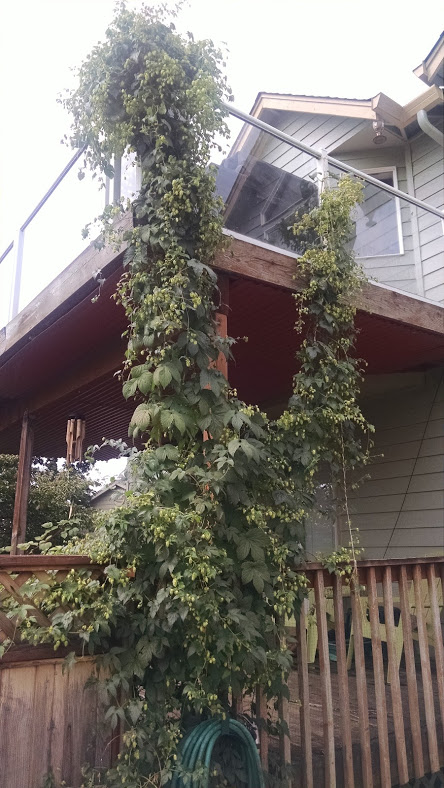
Suburban hops, picture courtesy of Matt Spaanem (Mutedog) on Google+.
Writer’s note: I want to be honest with this one right off the bat. This is something I have never tried, nor plan on trying in the near future. My fiancé, who homebrews, can’t wait till we get out of an apartment so we can try hops in the suburban environment. If anyone has grown hops in a more urban area, please add your voice to the SUF community!
Homebrewed beer is taking off again in the States, and it’s no wonder why. It is a great way to experiment with flavours, a fun way to keep yourself and others entertained — both with the procedure and the product, and it’s a great hobby and art — especially if you like beer. And with the rise of homebrewed beer, the rise of home-grown hops was sure to follow.
I wasn’t aware of this trend until I came across a G+ post by Matt Spaanem where he was spending time harvesting the cones on his lunch break. Instantly, the world opened up, and I was intrigued. Hops are surprisingly not that hard to grow, though they do require a little bit of attention to ensure they are healthy.
The Basics
Hops is a needy plant, but not so needy that you should shy away from it. According to Northern Brewer , a hops plant needs:
- Lots of vertical space
- Soil pH of 6.0 – 8.0 (neutral to slightly basic)
- Lots of direct light, with a preference for southern exposures
- 120+ frost free days
- light textured, well drained soil
The Midwest Supplies adds a few notes to this list as follows:
- Lots of vertical space
- Soil pH of 6.0 – 8.0 (neutral to slightly basic)
- Lots of direct light, with a preference for southern exposures
- 120+ frost free days
- light textured, well drained soil
The hardest part of all that might be finding the vertical space, but it would seem that you can literally let it climb on anything as the vines do not destroy as it grows. The worst you have to worry about with the vining is plants of different varieties getting tangled together, then not knowing which is which come harvest time. But don’t let this stop you from enjoying some homegrown hops to put in your homebrew experiments.

